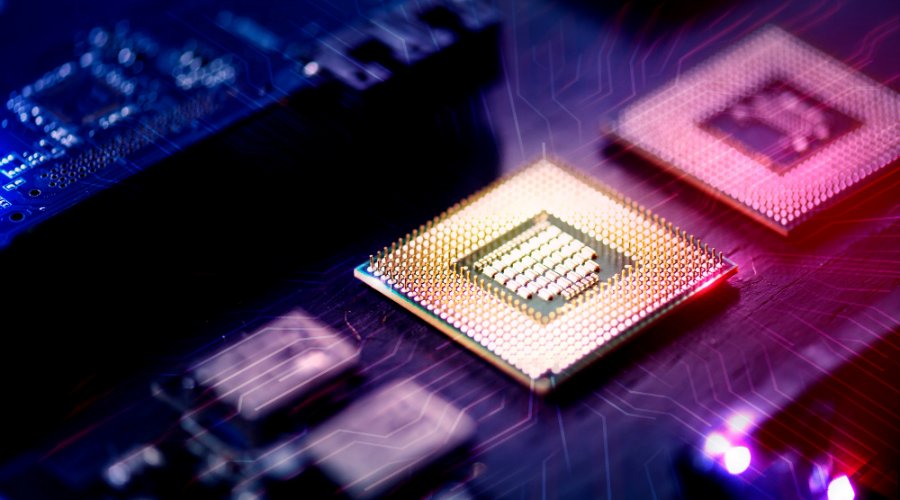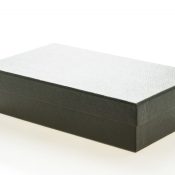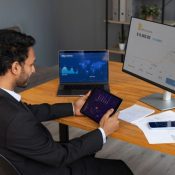
What is CPU Mining? Beginners to Advance Level Complete Guide
What is mining?
Mining is an algorithmic computing process in which so-called miners generate blocks and attach them to a generally applicable protocol. This process is called mining, analogous to gold-digging. The miners and nodes control the network and verify transactions. This makes it almost impossible for the network to be controlled by a central location since the miners keep the network running independently.
In addition, if a miner gains the upper hand, the network would lose trust, and the price would collapse. Large miners are also in favor of not representing a monopoly. As compensation for the computing power and the electricity costs, they receive a proportional reward in a wallet.
The blocks are data records and are created when enough transactions have accumulated. Among other things, they contain information from the previous block, all transactions and fees that have taken place since the last block, and a random number that is necessary for calculating the next block. Several blocks in a row are called a blockchain.
Mining is a computing process in a decentralized system to create consensus. Consensus is the agreement of the entire decentralized network on what has happened and what has not. Through the symbiosis between consensus and technical requirements, Satoshi Nakamoto was able to create the largest decentralized network to date.
3 types of participants are distinguished in the mining guide and the question of what mining is:
Users
Most participants are so-called users, also known as light nodes. They usually only want to make transactions and need the complete blockchain stored. They send their request to make a payment to so-called nodes and miners, who forward this information to achieve consensus across the network. Users pay a mining fee (fees) for this, which comprises a portion of the transaction value.
You are a user if you are using the network to send bitcoin or other cryptocurrencies back and forth. By using it, you give the network operator a share for the transfer of the coins. This new interface made a third party unnecessary. Since both people rely on blockchain technology, they don’t have to know each other.
Due to these special features, Bitcoin was able to create the first system in the world that works completely without a third party.
Nodes (nodes or full nodes)
They receive information from users and other nodes, verify it, and then, in turn, forward it to other nodes. They store the entire blockchain, so full decentralization is possible.
In practice, these nodes are websites displaying lots of data from the blockchain. A well-known site that also provides many analysis tools is Glassnode.
Miner (refers to gold)
They check and verify transactions that users want to carry out. In this way, they generate the consensus and receive a reward for the available computing power.
The consensus allows miners to do the same work independently, making the blockchain forgery-proof. The miners are the essential part of the blockchain and the only ones who could allow changes to the blockchain in a fair process.
How does mining work?
As soon as a miner receives a transaction, he carries out the following checks: Was it signed with the correct private key, and does the sender even have enough coins to send? If this information is correct, this information is forwarded to other miners. A consensus emerges. Therefore, all trust in the network is in crypto and the community.
There are two ways to profit from mining yourself. On the one hand, by buying and operating mining devices within your own four walls; on the other hand, by joining a cloud mining provider – whereby the latter could lead to a total loss!
Bitcoin mining is a process in which computing power is made available to process transactions and secure and synchronize all users on the network. It records, monitors, and manages all activities in real-time, which is why mining is a decentralized bitcoin data center with miners worldwide. This process is called mining, analogous to gold-digging.
For this process, the miner receives bitcoin shares, which depend on the available computing capacity.
In this data center, all transactions that have occurred within a certain period are noted in a kind of list, the block. The miner checks and confirms this and enters it into a virtual ledger, the blockchain. For this work, he receives a proportion of the transaction fees of the transferor, depending on the computing power made available.
The transactions are the sum of the transaction fees for each transaction on the one hand and the block reward set at the current time on the other. This block reward is halved every four years in the Bitcoin system, thus enabling falling inflation. As a result, Bitcoin is not deflationary but has falling inflation. Compared to the policy of the fiat systems, this falling inflation does not result in any strong market distortions.
There are two types of mining – one is the self-miner. This buys hardware to provide the computing power for the respective network. After that, an attempt is made to find the next block by investing in electricity costs. There is also cloud mining, which could be more profitable due to the increasing counterparty risk.
A third party uses your capital to mine the coins and gives you the rest – minus the costs. Most of the time, this doesn’t end very profitably.
What are CPU, GPU, and ASIC mining?
When Bitcoin was in its infancy, CPU mining was one of the only ways to create Bitcoins. A standard computer was used for the calculations. However, since the community was looking for other mining options, the way was paved for mining with the graphics card (GPU mining). The advantage of the GPU is that it can do the work in parallel compared to a CPU, thus increasing the mining performance by a factor of 50 – 100.
In principle, any GPU can be used for mining. After a while, it turned out that GPUs from AMD is superior to Nvidia in mining. But time is also moving on: the crypto world is currently transitioning to the so-called application-specific integrated circuit (ASIC =Application Specific Integrated Circuit). This is a chip that was only developed for a specific job and produced a selected coin. If an ASIC is built to mine Bitcoin, it cannot produce Ethereum or any other cryptocurrency.
In retrospect, the evolution of mining through the simple computer to graphics cards and, ultimately, the focus on the devices specially designed for mining represents normal competition in the free world of cryptocurrencies.
Because the decentralized nature of Bitcoin enables a liberal and completely free system, in the long run, the development of more efficient devices will continue because this free competition extends across the entire world. Anyone can – as long as they have an internet connection, computer hardware, and electricity – start mining with Bitcoin.
Enormous advantages through ASIC Miner
However, the enormous advantage of ASICs is that by completing a specific task, the hash rate (computing power) increases by 100. Still, at the same time, the energy requirement is reduced by about a factor of seven. In summary, mining evolution has moved from CPU to GPU and, ultimately, to ASIC. These have been further developed since then. There are two ways to mine: alone or as a pool member. The advantages of the mining pool outweigh this. There is no need to purchase expensive computing hardware or pay expensive electricity costs, but several investors join together. This maximizes yields while minimizing work.
Also read : Payment Gateway to Use for your eCommerce Website
What is a hash?
A hash is a string of numbers and letters containing any information about the transaction. A complex mathematical formula converts this data into code. The same data always leads to the same hash, but a completely new hash is created if only a single bit of the data is changed.
Was it Cloud Mining?
Mining yourself has not been profitable in countries like Germany for a long time due to the current difficulty. Therefore, it seems more sensible to join an online mining service provider and a pool with several small investors.
Cloud mining is aimed at users who, due to their high administrative costs, have decided not to mine themselves but to secure computing power (hash power) from companies.
This has the advantage that there is no need to purchase, install, maintain or constantly cool your mining equipment. External facilities take over this part for the user, which is why he only has to pay a fee depending on the amount of computing power purchased.
In this case, the institutions act as service providers and make their experience and equipment available to you under often favorable conditions. Here you benefit from the volume discounts for the hardware you obtain directly from the manufacturer and the cheaper power supply in third countries. In addition, they can achieve a much higher mining result because they have a much higher share of the hash power in the entire network than the individual, private miner.
Why doesn’t a mining provider use the mining software themselves?
This is because mining hardware prices usually increase as global demand increases and technological advances are noted. For this reason, this procedure works just in time, which means that the companies only invest in hardware when the customers have bought their products and thus do not question their liquidity. Of course, the company earns money in the process of mining cryptocurrencies. So the customer does not have to explicitly deal with the question of what mining is.
Why is cloud mining still not advisable
The problem with cloud mining is counterparty risk. Because as soon as you put your capital in another person or company’s hands, you also have to lose a bit of trust. This trust can quickly become your undoing in the still-young crypto world because many companies use the capital for big payouts. Because their managing directors also want to drive a Porsche.
Therefore, if you give it to such cloud mining providers, you have to write off the capital in theory. It becomes dangerous when you set yourself expectations of the matter. Because they often have their own financial goal in mind first until the payouts reach the users. You need a lot more experience with your mining, but you can still be sure your capital is recovered.
The pros and cons of cloud mining
Advantages
Immediate start, as there is no waiting for the mining equipment to be delivered
no ongoing electricity costs
no nuisance from noise and ventilation
no technical knowledge is necessary
Disadvantages
Fraud in the form of a pyramid scheme if the company is not transparent enough
generally less profit, except for mixed mining
no ownership of the hardware
counterparty risk!
Bitcoin Mining and Power Consumption: A Rumor!
Who needs to learn the story of Bitcoin and its high energy consumption? The stronger Bitcoin grows, the more often this problem is presented in politics. The actual development behind the network is overlooked. Because of the free and liberal market of Bitcoin, a clear movement towards environmental friendliness can be seen. Many deeply rooted in the business even claim that Bitcoin is the most environmentally friendly network in the world. But why are there so many different views here?
Especially compared to other cryptocurrencies, Bitcoin is slow and consumes a lot of energy. In fact, due to the size of its network, Bitcoin has one thing in particular: a high load. Hardly any of the other cryptocurrencies have this burden. Since such decentralized projects often do not complete official stress tests, it isn’t easy to draw a comparison here. A stress test is an enormous load on the network by multiplying the requests per second.
Many networks that are touted as extremely powerful know this problem only well. Initially known as the Bitcoin or Ethereum killer, the networks quickly reach their breaking point when the number of users increases rapidly. Therefore, many blockchain projects – especially small ones – scale significantly better than Bitcoin mining. However, this is not comparable due to a different load.
In addition, the decentralized network’s costs are crucial in the future development of environmental problems. Because a Bitcoin miner initially faces two problems: buying hardware and a power source. The hardware is to be regarded as an investment that does not have permanent costs. However, electricity is a permanent cost factor for the miner.
Due to this purely economic connection, the miner has to keep the electricity costs low to use the hardware as profitably as possible. Due to this effect, the miners always aim to reduce electricity costs. How do miners solve this problem in practice? They’re moving toward renewable energy. Wind, water, and solar energy often balance this factor. Large mining centers fall on waterfalls or the like.
Political realignment through mining
Bitcoin mining can also herald a new age of energy utilization at the political level. After all, Germany is selling electricity abroad cheaply after an energy surplus to buy it back expensively when there is a shortage. The effect on the community is one thing above all: costs. By interposing Bitcoin mining in this problem, if there is a surplus of electricity, it can be invested in mining with Bitcoin.
The effect behind this is clear: If there is a surplus of electricity, profit can be made through Bitcoin mining. If there is a shortage again, the missing electricity can be bought with the proceeds of Bitcoin. With this technique, a completely new method can be developed as to how Bitcoin mining could solve the logistical problem of electricity.
Mining and taxes?
Although Bitcoin mining is completely decentralized and pseudonymous, taxes are due in many countries. In Germany, mining was also assigned to commercial activities and was subject to special taxation. You should find out in advance how mining is handled in your country. In liberal countries like Switzerland, the requirements for mining are often less stringent than in Germany.
Many miners intend to refrain from taxing their profits. There is a risk of tax evasion. The tax office also keeps an eye on this and focuses on this illegal activity. Because at the latest when the interface to the real world is made and the coins are sold, taxes on the mining can become due when paid into the bank account. If necessary, you should contact a tax advisor specifically focused on mining and taxes.




